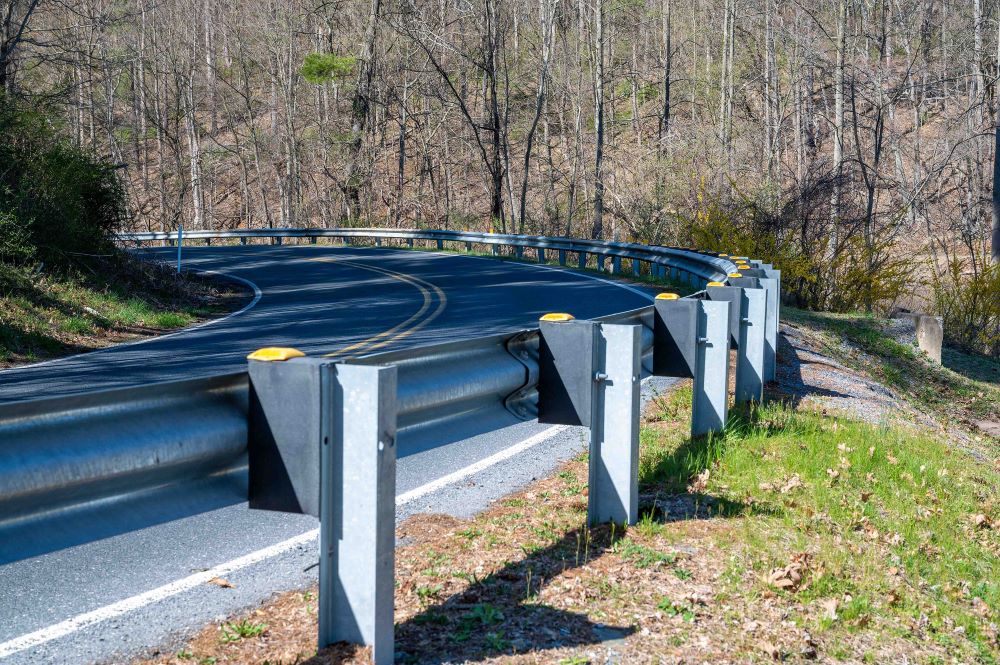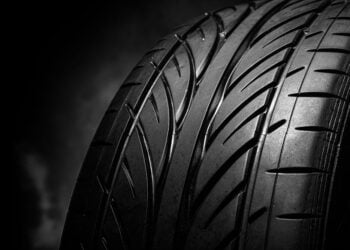Guardrails play a crucial role in ensuring roadside safety by preventing vehicles from encountering roadside hazards such as rigid objects, steep slopes, cliffs, or bodies of water. These protective barriers are strategically placed along highways, bridges, and curves to minimize the severity of collisions. In this article, we’ll delve into the world of guardrails, with a specific focus on guardrail terminals—the critical components that mark the beginning or end of a guardrail system.
Guardrail Face: Redirecting Vehicles Safely
The guardrail face is the visible part of the barrier that faces the road. Its primary purpose is to redirect a vehicle back onto the roadway if it veers off course. Here are some key points about guardrail faces:
Composition: The most common guardrail design features galvanized steel w-beam panels that are lapped and connected with rigid splice bolts. Alternative designs include concrete barriers and cable barriers.
Considerations: There is no single “best” barrier system. Each has its own benefits and potential drawbacks that make it better suited to specific applications.
- Cable Barrier: High-tension Cable barrier is often the preferred choice in relatively wide medians or on roadsides where there is sufficient “safe space” beyond the barrier location. Cable barriers have the greatest dynamic deflection of the three most prominent barrier types, and are thus more forgiving for the occupants of the impacting vehicle. While that behavior is desirable in locations that allow for it, many locations where barrier is installed feature hazards that are located just beyond the barrier.
- W-Beam Guardrail: W-beam guardrail is considered to be a semi-rigid barrier. It still allows for some dynamic deflection, thus reducing the impact forces exerted on occupants.
- Concrete Barrier: Concrete barrier is considered to be a rigid barrier. It has essentially no dynamic deflection (except for precast, temporary barriers, which can move somewhat when struck). This makes concrete barriers the least forgiving for the occupants of an impacting vehicle, but also the only option for many situations where no room for dynamic deflection exists because the hazard is located immediately beyond the barrier.
End Terminals: Absorbing Kinetic Energy
While guardrails are meant to protect drivers from roadside hazards, they themselves can become a hazard, especially at the end, where the guardrail is secured with a rigid anchor, and the narrow, relatively sharp end of the guardrail is exposed to impacting vehicles. Guardrail terminals are the critical components at the beginning and end of a guardrail system. Their purpose is to anchor the guardrail for redirectional impacts while minimizing the severity of a direct impact. Let’s explore end terminals in more detail:
Energy-Absorbing Guardrail Terminals: These designs utilize various means to dissipate energy, gradually decelerating an impacting vehicle. This is most commonly achieved by extruding the guardrail through an impact head that kinks, cuts, or crushes the guardrail as it passes through the impact head.
Gating End Terminals: Gating end terminals are designed to give and allow a vehicle to pass if struck near the end. Gating terminals are designed to function as a redirective barrier after a specific distance from the end.
Crashworthiness Testing
Guardrail systems undergo rigorous crash tests to assess their performance. These tests simulate real-world collisions and evaluate factors such as occupant safety, vehicle redirection, and structural integrity. The results guide improvements in guardrail design and installation practices.
Global Safety Standards
Several safety standards govern guardrail design and installation worldwide. Notable ones include:
NCHRP Report 350: The crash testing standards described in Report 350 were superseded by MASH, but are still applicable for many existing installations, depending on the installation date.
AASHTO MASH (Manual for Assessing Safety Hardware): Developed by the American Association of State Highway and Transportation Officials (AASHTO), MASH provides guidelines for crashworthy guardrail systems. MASH is the current crash test standard for safety hardware used on new construction in the U.S.
EN 1317 (European Standard): EN 1317 outlines requirements for road restraint systems in Europe. It covers various performance levels and impact scenarios.
Conclusion
Guardrails, along with their end terminals, are unsung heroes of roadside safety. By redirecting vehicles and reducing crash severity, they save lives and prevent catastrophic accidents. As we continue to improve our transportation infrastructure, let’s appreciate the silent guardians that keep us safe on the roads.











